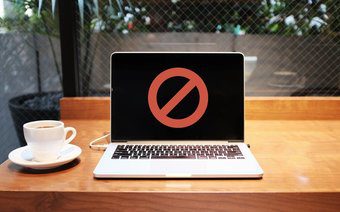As you may expect, the process of translating IP addresses to website names will consume some time, which could cause access delay. Particularly, if the DNS servers are down, you will not be able to visit most websites through their URL, which isn’t uncommon. Hence, it is necessary to make a list for mapping hostnames to IP addresses. That is what Windows HOSTS file does. On most Windows systems, the HOSTS file content is used preferentially over other methods, such as the DNS. With the proper use of Windows HOSTS file, you can accelerate the access speed of favorite websites, test a website locally and even selectively block certain websites (Image by technet). In fact, blocking websites through the HOSTS file is an effective way to do it because it blocks it across all the browsers (we’ve previously discussed methods to block sites in Internet explorer and Google Chrome). This article has some tips to manage the HOSTS file and block websites with it. The two methods I’ll discuss here are:-
1. Edit HOSTS File Manually
Windows NT platform systems including Windows 2000, Windows XP and Windows 7 have their HOSTS file in the path %SystemRoot%\system32\drivers\etc\ (“%SystemRoot%” is relative path, which depends on the system-wide environment variable, it should be C:\Windows or C:\WINNT in most cases). Basically, you just need to type the above mentioned path in Windows search bar (or run box) to get to the “etc” folder where you’ll find the HOSTS file. You can use any text editor to open the file and edit it manually. Note: For Windows 7 users, there’s one more step. Type “Notepad” in Start Menu search bar, and then right click on the “Notepad” item, choose “Run as administrator”. Now you can open HOSTS file with “File -> Open” menu in notepad. The HOSTS file contains lines of text including an IP address and one or more hostnames. You can add the mapping relationship of each websites. The comment lines are indicated by a hash (#) character, which will be ignored by system. To block a website, simply add a line like this: 127.0.0.1 (or Localhost) is the standard hostname given to the address of your computer. You mapped the website name to your PC, hence you can’t visit the site any more. So if you want to block Facebook, just add this line: 127.0.0.1 facebook.com
2. Edit HOSTS File with HostsMan Editor
HostsMan Editor (via cybernet news ) provides a sleek interface for managing your HOSTS file. If you are going to use your HOSTS file often, I recommend you use this tool. As you see in the screenshot above, the add button can let you add the sites you want to block. You just need to map them to the localhost IP. You can add, delete or temporarily disable the items with this tiny tool. What’s more, it can list potential risks items in “Possible Hijacks” section. So that was about how to make use of the HOSTS file in Windows to block websites. Also check our review of OpenDNS, another way to filter the websites that get accessed on your computer. The above article may contain affiliate links which help support Guiding Tech. However, it does not affect our editorial integrity. The content remains unbiased and authentic.












